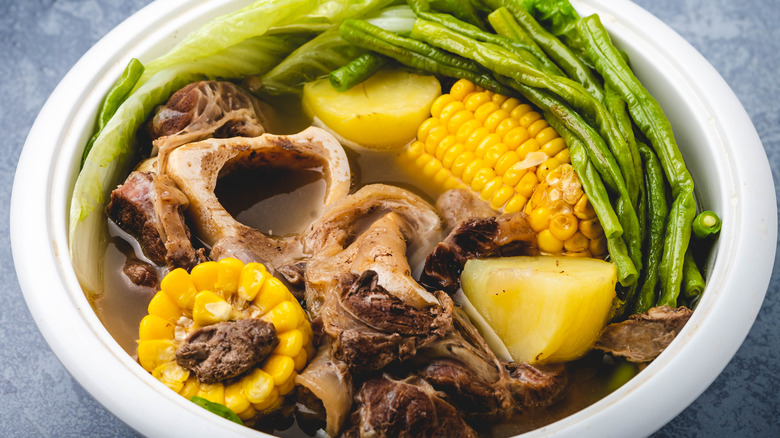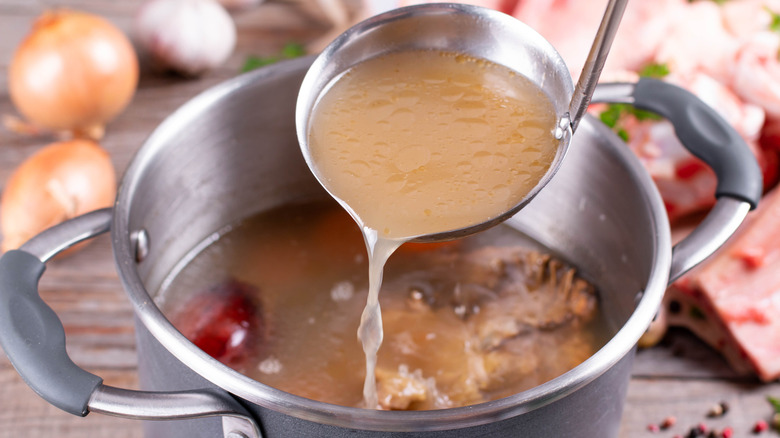The Best Bones To Use For Broth
A bone broth cooked using the correct method and ingredients is not only a nutritious and healthy recipe but delicious and appealing to the eye. According to the health and wellness blog Ossa Organic, this food became popular in the 14th century when Maimonides, a renowned Spanish doctor, and philosopher prescribed it to patients for its health benefits. It is still gaining popularity today in circles where health and fitness are a priority, per Healthline. As we strive to find the perfect recipes for optimum results, the recurring question is: what is the best type of bone for bone broth, per Whole 9 Life.
A good bone broth will have a gel-like consistency once it cools, per All The Nourishing Things. While its texture is an important indicator of your level of success, per Paleo Leap, the lack of a jelly-like consistency is not indicative of its nutritional content. Additionally, even though the perfect broth cools down to a gel-like consistency, once it is heated, it liquifies again.
There is no way to explain exactly how a bone broth should taste, aside from the fact that its flavor is dependent on its ingredients, per The Spruce Eats, meaning: the broth will taste like the type of meat that the bone comes from, and richer.
Method and ingredients
Irrespective of what bones you use for your broth, you will get unfavorable results if your method is incorrect. As such, we appreciate the importance of blanching the bones (to rid them of unappealing feculence) and roasting them for flavor. To omit the former or the latter stages from the bone broth-making process would be a crucial mistake.
The type of bones you use for a broth will determine the texture and flavor. The truth about bone broth is that no single type of bone determines success. But for a start, if you want a gelatinous consistency when your broth cools down, a collagen-rich bone (marrow bone) is essential. Additionally, the ingredients for a successful broth are bones with lots of tissue (like joints), knuckles (also rich in gelatin and collagen, per Price of Meat), and feet, per Hims.
Accordingly, an even mix of bones is the best way to get the most out of your broth, per Steak School.

